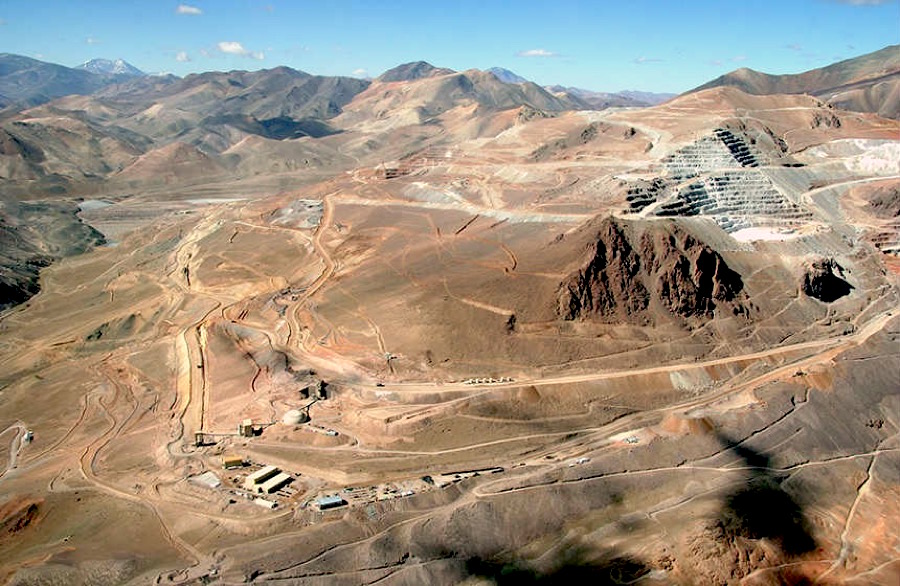
Barrick Gold Corp. executives will have some explaining to do when the company releases full-year results Wednesday.
Even with rising gold prices and a strengthened balance sheet, the world’s largest gold producer left shareholders with the worst returns among its top North American peers last year and the third-worst performance in the 15-company BI Global Senior Gold Valuation Peers index.
That’s a sharp reversal of the heady gains a year earlier when the Toronto-based company appeared unable to put a foot wrong. In 2016, Barrick’s Canadian shares soared 110 percent as it unveiled a sweeping plan to streamline the company. That same year its biggest rival, Newmont Mining Corp., rose 89 percent.
Notwithstanding the recent global stock rout that has sunk equities globally, Colorado-based Newmont’s shares have gained, while Barrick has stumbled.
The widening gap between the two companies can partly be explained by what appear, at least, to be diverging strategies. While Newmont executives have increasingly talked about growth, Barrick has spoken more about margin improvements and debt reduction through cost cuts, asset sales and transforming its portfolio through digitization.
But extending the digital effort beyond its core mines in Nevada will take longer than originally hoped. And while shareholders initially rewarded the company for slashing debt, that “low hanging fruit” has now been picked, said Michael Siperco, an analyst with Macquarie Capital Markets.
“The harder part is convincing the markets that the assets you have left are the right assets, that you have growth — or can at least maintain production levels going forward –and that you can keep lowering costs and generating returns on those assets,” he said last week by phone from Toronto.
Mine depletion is the bane of gold companies and Newmont has, increasingly, been talking up its plans to combat it. At its December investor day, Chief Executive Officer Gary Goldberg stressed that the miner has added more than 2 million ounces of new production in the past five years.
Although Barrick holds vast untapped deposits, including in Nevada, some of its largest mining assets, like Pascua-Lama on the Chile-Argentina border, are years from production and face hurdles. Last week, Barrick said it will take a $429 million pretax charge as it reclassifies the deposit in the Andes.
Meanwhile, a protracted dispute in Tanzania has threatened the current pipeline of Barrick’s majority-owned Acacia Mining Plc. On Monday, Acacia canceled its dividend and said production will plunge this year after Tanzania banned shipments of semi-processed ore. Barrick also faced challenges last year at its Veladero mine in Argentina.

“No one of these issues is a critically negative catalyst,” said Siperco, who remains bullish on Barrick primarily because of its Nevada assets. “But in combination, coupled with a weaker-than-expected second half of the year after quite a strong first half, that’s basically where we are with the stock today.”
The upshot is that after having already exceeded Barrick’s market capitalization by more than $4 billion, Newmont is now within a whisker of claiming the title of the world’s largest gold company by production.
In a December interview, Barrick President Kelvin Dushnisky said he expects the miner’s share price will improve once it provides more detail about its project pipeline and the contribution copper assets are making to cash flow.
Dushnisky also raised the possibility of a dividend increase, or share buyback, something that would be music to the ears of its investors. That tune is already familiar to Newmont investors. As gold prices came off their lows, Goldberg has repeatedly stressed the need to lure shareholders away from ETFs with higher dividends — and the company has been refining how it implements that initiative in the past year.
Goldberg also has said Newmont has no need to pay down any debt early, another contrast with Barrick, which hasn’t ruled out selling another asset in order to reach its total debt target of $5 billion by the end of this year.
In an emailed response to questions about Newmont’s stock performance, Goldberg said the company’s strategy is to create long-term value for shareholders and noted that the company is differentiated by a diverse portfolio and long-term production profile.
For its part, Barrick said Veladero and Acacia “created some unanticipated headwinds” last year.
“We’re going to maintain our focus on the priorities that will ultimately drive long-term value for our shareholders,” spokesman Andy Lloyd said last week by email, “including operational excellence and margin expansion, capital discipline, a strong balance sheet, advancing our project pipeline, and importantly, consistent execution.”
Barrick releases earnings after regular trading Wednesday. Newmont is scheduled to post its results Feb. 22 before markets open.